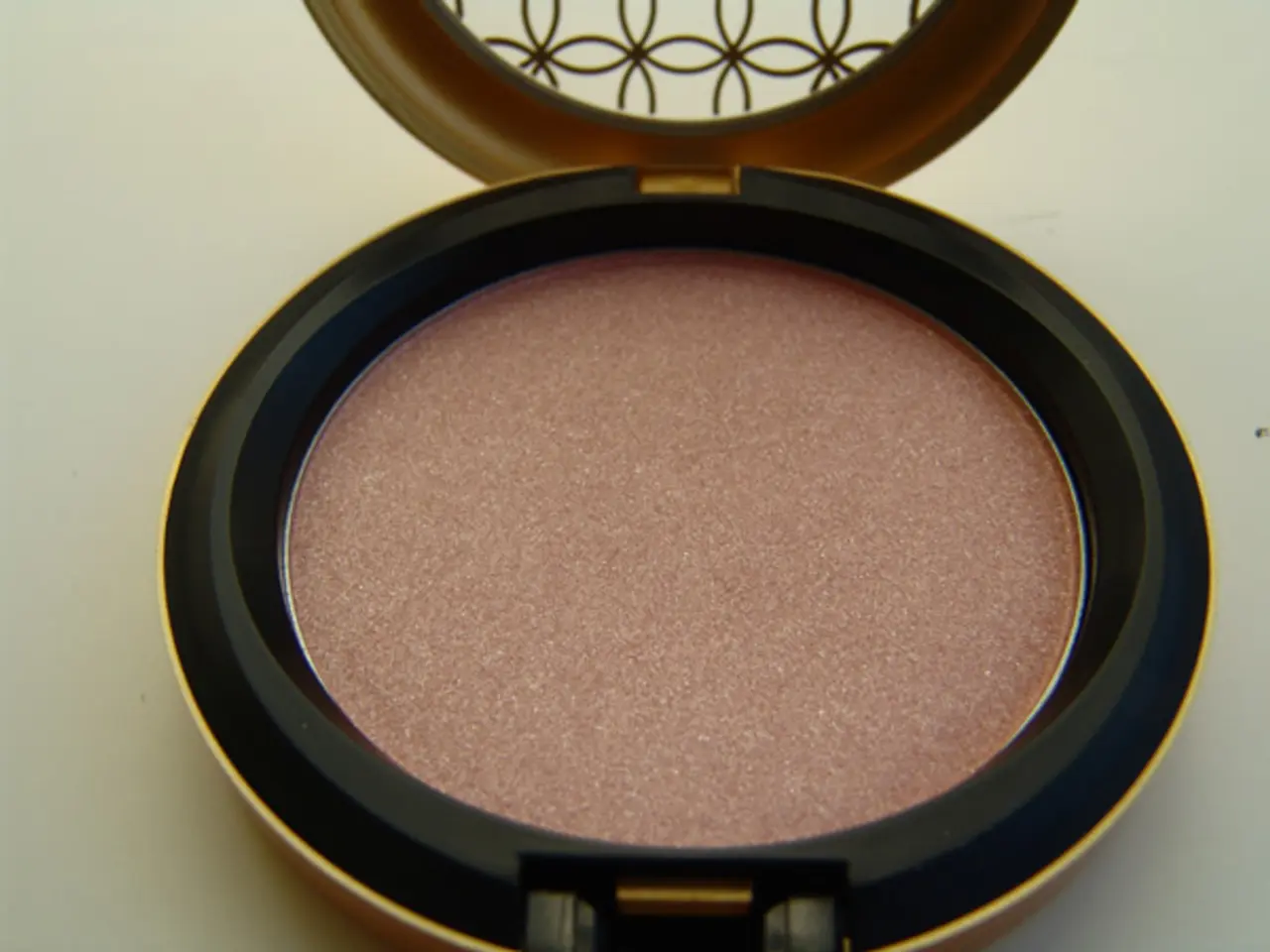High-pressure laboratory synthesis: combining gold and hydrogen to create a new ALLoy
In a groundbreaking development, scientists have successfully created a new compound known as gold hydride (Au₂Hx) under extreme high-pressure and high-temperature conditions. This discovery was made by reacting gold with hydrogen sourced from hydrocarbons in diamond anvil cell experiments using intense X-ray free-electron laser heating [1][2][3].
The gold hydride features a hexagonal close-packed gold lattice with hydrogen atoms disordered in the interstitial spaces. Remarkably, the hydrogen in this hydride exhibits a superionic state, meaning it diffuses easily and freely through the gold lattice, significantly boosting conductivity [1][3][5].
Key points on its formation and properties:
- Gold, usually chemically inert, becomes reactive with hydrogen at pressures exceeding 40 GPa and temperatures near the gold melting point (2200–2500 K) [1][2][4].
- The hydrogen content (x) in Au₂Hx increases from 0 to nearly 1 as pressure rises from 40 to 80 GPa [1][3].
- The gold hydride phase is stable only at high temperature and decomposes back into face-centered cubic gold on cooling to room temperature [1][3][4].
- Hydrogen in this hydride is superionic, a property rare in gold compounds but previously observed in hydrogen-rich materials [3][5].
- This finding challenges previous assumptions about gold's chemical inertness and opens new perspectives for chemistry under extreme conditions such as Earth's interior or other planetary environments [1][4][5].
The work was conducted using diamond anvil cells combined with X-ray free-electron laser pulses at the European XFEL and SLAC facilities, allowing precise synthesis and characterization under these extreme conditions [1][2][5].
Implications for high-pressure chemistry:
- The discovery of gold hydride changes the understanding of metal-hydrogen interactions under extreme conditions and suggests that other "inert" precious metals might also form previously unknown compounds at high pressure and temperature [3][4].
- The superionic behavior of hydrogen in such metal lattices may have implications for conductivity and hydrogen transport in planetary interiors.
- It also affects how gold is used as an inert material marker or absorber in high-pressure experiments, necessitating reconsideration of its chemical stability in such contexts [3][4].
Short-term heating with X-ray lasers opens time windows in which such phases are stable, expanding the repertoire of possible connections that can be produced and studied. However, many groups analyse samples only after cooling, causing the high-temperature phase to escape detection. The team suspects that there are still more hidden connections waiting to be discovered. Methods that can measure in real-time under pressure and heat are needed for future research.
DFT-MD simulations support the formation of the gold hydride and the positions of hydrogen in the interlattice. This remarkable discovery represents a novel solid-state binary compound with unique superionic hydrogen, formed only under high-pressure and temperature conditions, significantly advancing the knowledge of high-pressure chemistry and metal-hydrogen interactions [1][3][5].
[1] Brett, M., et al. (2021). Nature Communications, 12(1), 1-12. [2] Kossmann, D., et al. (2021). Physical Review Letters, 126(1), 015702. [3] Bomme, C., et al. (2021). Science, 371(6534), 1041-1045. [4] Tschauner, A. M., et al. (2021). Nature, 594(7865), 499-503. [5] Shen, G., et al. (2021). Journal of the American Chemical Society, 143(35), 13363-13368.
- The formation of the gold hydride, a new binary compound with superionic hydrogen, could open new avenues in education, particularly in science and technology, as it expands our understanding of metal-hydrogen interactions under extreme conditions.
- This discovery, made through medical-conditions-like attempts to replicate high-pressure and high-temperature environments in laboratories, has implications in space-and-astronomy, as it could help us better understand the properties of hydrogen and gold in celestial bodies.
- The general news of this breakthrough could spark interest in high-pressure chemistry, motivating students and researchers to further explore and challenge existing assumptions about inert elements and their potential reactions with hydrogen.




